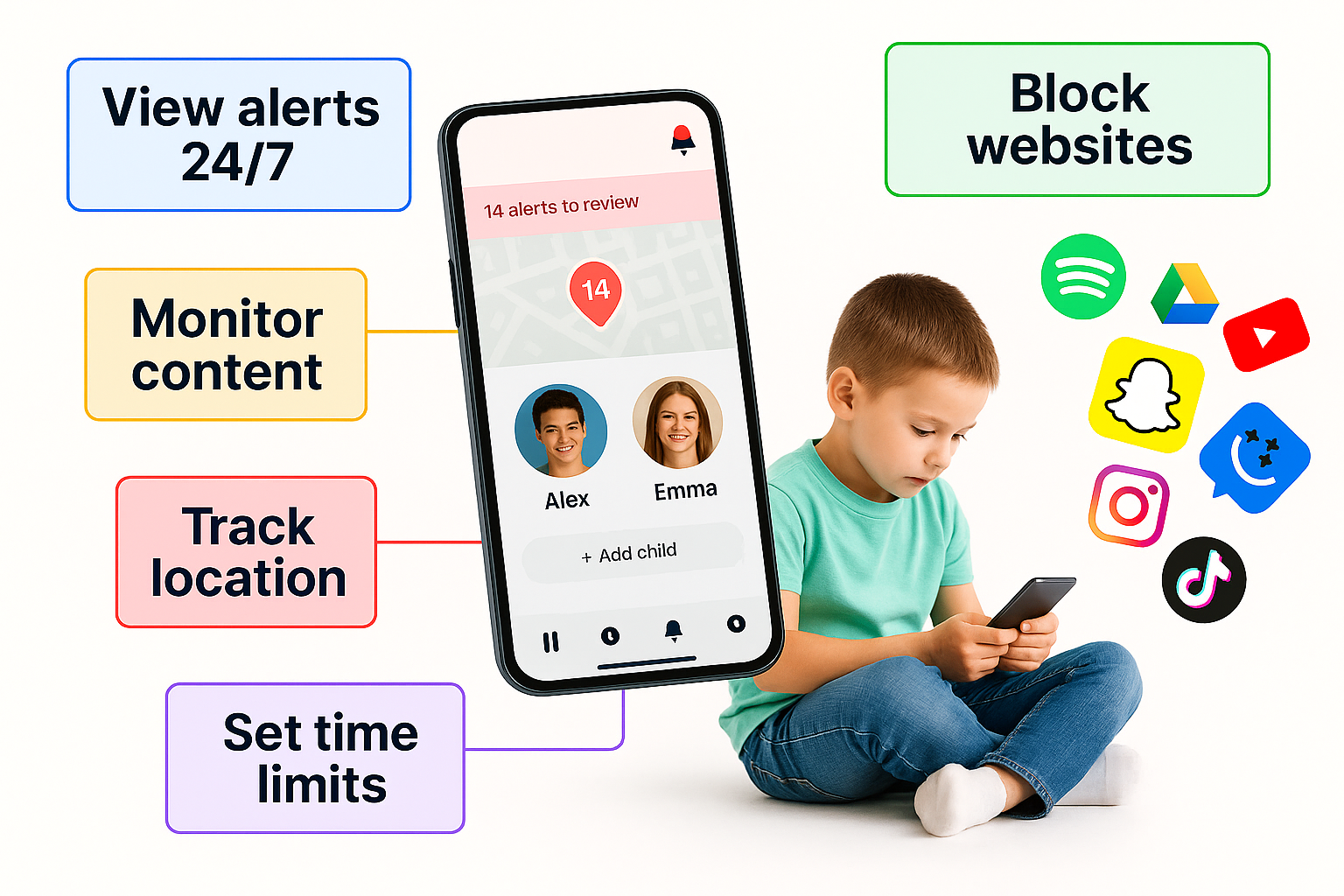📱 Why Kids Need Parental-Controlled Phones: New Data Every Parent Should Know
It’s the moment every parent eventually faces: “Can I have my own phone?” Whether your child is 7 or 12, the pressure to give in is real. Friends already have phones, school might require one, and safety concerns push us closer to yes. But here’s the truth — not all smartphones are made for kids, and giving a child a fully unrestricted device can create more problems than it solves.
Today’s families are turning to parental-controlled smartphones and GPS smartwatches as a solution — and the latest research shows why that’s a smart move. These kid-focused devices do more than limit time online — they build trust, teach responsibility, and keep kids safer in a digital world that’s changing fast.
The Digital Landscape: Kids Online in 2025
We live in a hyper-connected age. A decade ago, most kids didn’t touch smartphones until their teens. Now, nearly 50% of children own a smart device before age 10, and many start using tablets or parents’ phones even earlier.
By age 12, most kids are texting, streaming, playing online games, and even interacting with strangers on social media — often without their parents fully knowing what they’re exposed to.
Here are just a few trends from recent surveys:
- Kids aged 8–12 now spend an average of 5–6 hours per day on screens.
- 1 in 3 children admit they’ve visited a site or app they weren’t supposed to.
- 70% of tweens say they feel pressure to respond quickly to texts and DMs — even during sleep hours.
- Cyberbullying and exposure to adult content are on the rise, even for kids using popular "safe" apps.
If that sounds alarming, it should. But it also doesn’t mean your child has to grow up afraid of the internet. It means they need the right tools and guidance — starting with the phone (or smartwatch) they use.
Why Parental-Controlled Phones Are the Smarter Choice
Let’s be honest: a regular smartphone wasn’t made for an 8-year-old. Adult devices are full of distractions, open internet access, addictive social platforms, and unfiltered content. A child with no boundaries on a regular phone is like handing them car keys without lessons.
Here’s where kids’ phones and smartwatches with parental controls shine:
- You control the content.
Filter web access, block downloads, and only approve age-appropriate apps. - Time limits are built-in.
You can schedule screen time and enforce downtime (like bedtime or school hours), so you’re not constantly fighting over when to put the phone down. - GPS location tracking adds real peace of mind.
Know where your child is at all times — and get alerts if they leave a safe zone. - Calls and messages from approved contacts only.
This prevents your child from receiving random calls or texts and helps them focus on real relationships. - No social media (or strictly controlled access).
Delay the introduction of platforms like TikTok or Instagram until your child is emotionally and mentally ready.
Don’t Forget the Smartwatch Option
For younger children, a GPS-enabled kids’ smartwatch might be even better than a phone.
Here’s why:
- It straps to their wrist (less likely to be lost or broken).
- No internet browser or app store.
- Two-way calling with just parent-approved contacts.
- SOS emergency button and live tracking.
- Encourages movement with step counters and games.
Many parents are now choosing a smartwatch as a "first device" to introduce digital responsibility slowly — especially for kids under 10.
Healthy Digital Habits Start Early
A child’s relationship with technology begins the moment they receive their first device. With a parental-controlled phone or smartwatch, you can shape that experience from the start.
These tools:
- Teach kids about screen limits and self-control.
- Encourage positive tech use like calling grandma or using an educational app.
- Prevent dependency on likes, followers, or endless scrolling.
- Start a conversation about online safety, responsibility, and balance — before bad habits take root.
And perhaps most importantly, they keep the parent-child connection strong. You remain in the loop, not in the dark.
How to Introduce a Kids’ Phone the Right Way
Here are tips for a smooth transition:
- Set expectations early.
Talk with your child before giving them the phone or watch. Explain it’s a tool — not a toy — and that it comes with responsibilities. - Create a tech agreement.
Write a simple “family phone contract” together that includes screen time rules, app use, and bedtime charging. - Review and adjust regularly.
Schedule monthly check-ins to discuss what’s working, what’s challenging, and when they’re ready for more freedom. - Model good screen behavior.
If you want them off their screens during meals or at bedtime — be ready to do the same.
Let’s stop thinking of phones as a digital danger — and start viewing them as opportunities for learning, communication, and trust-building. When you give your child a device that’s designed for their age and needs, you’re setting them up for success, not stress.
A parental-controlled phone or GPS smartwatch isn’t just a gadget — it’s a parenting tool. One that empowers you to guide your child safely through the digital world, one click, call, and conversation at a time.

